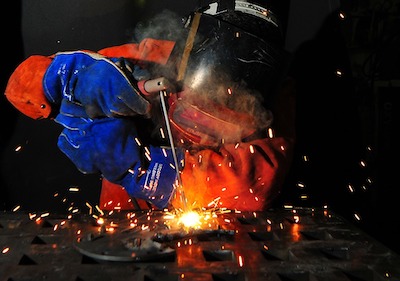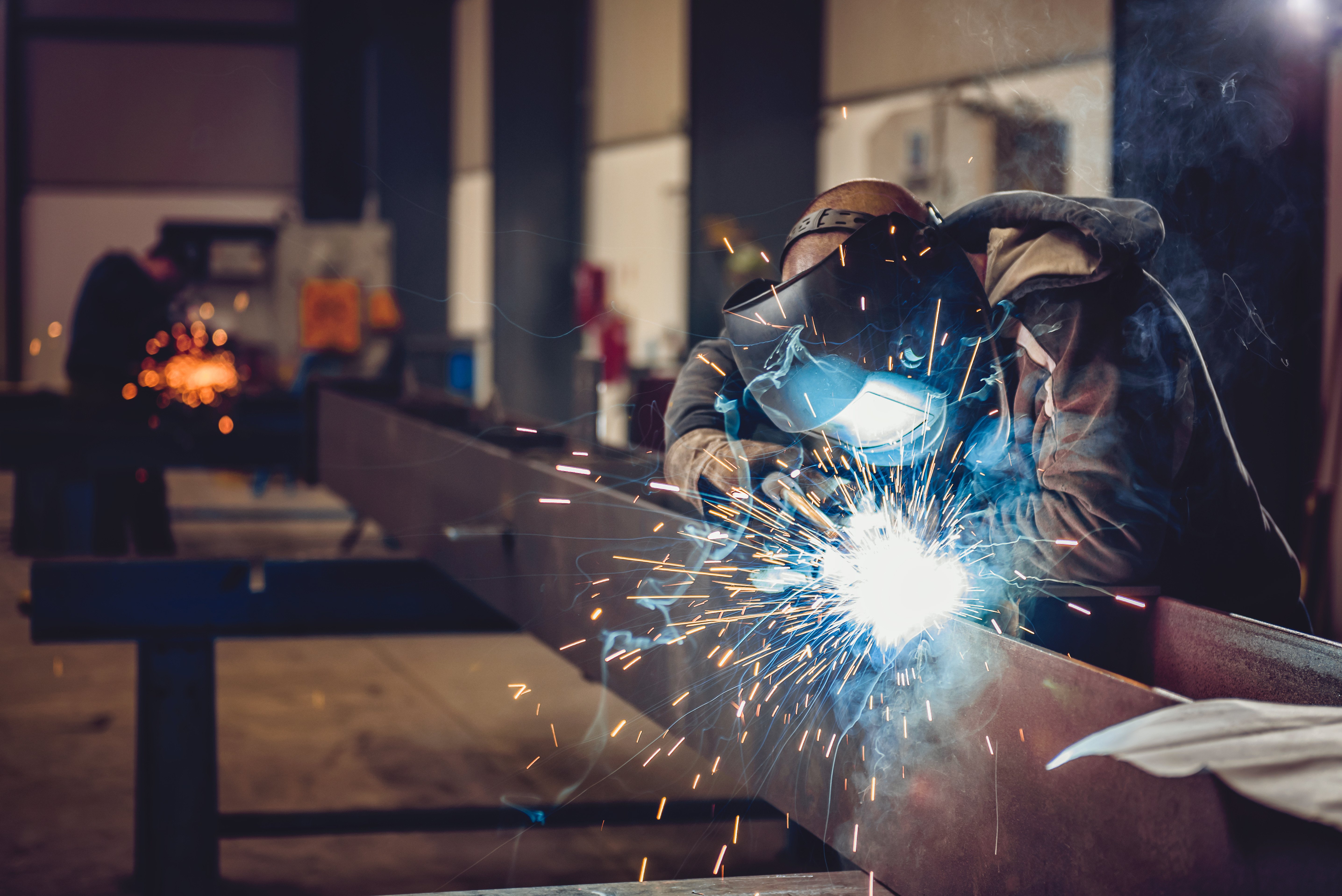All About Welding: Trick Insights Into Techniques and Ideal Practices for Success
Welding incorporates a selection of techniques, each fit for particular materials and applications. Understanding these approaches, such as GMAW, SMAW, and TIG, is crucial for attaining optimal results. Furthermore, the ideal equipment and safety and security practices can not be neglected. As prep work and repairing play essential duties in the welding procedure, understanding these elements can greatly improve the high quality of the end product. What are the essential elements that assure an effective weld?
Understanding Different Welding Methods
Welding techniques include a variety of techniques, each suited to particular applications and materials. Among the most typical strategies are Gas Metal Arc Welding (GMAW), Protected Steel Arc Welding (SMAW), and Tungsten Inert Gas Welding (TIG) GMAW, also referred to as MIG welding, is prominent for its speed and versatility, making it perfect for slim materials. SMAW, or stick welding, is favored for its simplicity and efficiency in outdoor settings, specifically with thicker metals. TIG welding offers accuracy and control, making it ideal for elaborate job and non-ferrous metals (Belgrade Welding). Each technique has its one-of-a-kind benefits and factors to consider, allowing welders to choose the most effective technique based upon the project's requirements, product kind, and preferred outcomes. Recognizing these strategies is crucial for effective welding
Crucial Welding Tools and Devices
While different welding methods need particular skills, the right tools and devices are similarly important for achieving quality outcomes. Crucial welding devices includes welding machines, which differ depending upon the strategy-- such as MIG, TIG, or stick welding. Safety equipment, consisting of aprons, gloves, and helmets, assurances safety and convenience throughout the procedure. In addition, fixtures and clamps assist secure products in position, making sure accuracy in welds. Consumables like welding poles, cord, and protecting gas are likewise critical components that affect the top quality of the weld. Tools such as cutters and grinders help with surface area prep work and post-weld finishing, contributing to a professional end result. Purchasing top notch equipment eventually enhances the performance and performance of welding tasks.
Safety Practices in Welding
Proper safety and security methods are important in the welding sector to shield workers from potential risks. Welders must wear appropriate personal safety tools (PPE), consisting of headgears with appropriate shading, gloves, and flame-resistant clothes. Appropriate ventilation is important to minimize direct exposure to unsafe fumes and gases created during the welding procedure. In addition, workers ought to be trained in the appropriate handling of welding devices to stop accidents. Fire precaution, such as maintaining combustible products away from the welding location and having fire extinguishers conveniently available, are required. Routine evaluations of equipment and workspaces can aid recognize possible risks before they lead to crashes. By sticking to these safety techniques, welders can develop a much safer working setting and lessen threats connected with their profession.
Preparing Products for Welding
Preparing materials for welding is an important step that significantly affects the top quality and honesty of the end product (Montana Mobile Welding and Repair Belgrade). Correct preparation entails cleaning up the surface areas to eliminate pollutants such as oil, dust, and rust, which can endanger the weld. Techniques such as grinding, fining sand, or making use of solvents are generally utilized to accomplish a clean surface area. Furthermore, making certain that the materials mesh snugly is crucial; spaces can cause weak welds. It's additionally important to consider the alignment and positioning of the elements, as this will certainly influence the simplicity of welding and the final outcome. Selecting the appropriate filler product and making certain compatibility with the base steels is necessary for achieving strong, sturdy welds.
Tips for Getting High-Quality Welds
Accomplishing top notch welds needs interest to detail and adherence to ideal practices throughout the welding procedure. Correct joint preparation is important, ensuring surfaces are complimentary and clean from impurities. Selecting the proper filler material and welding technique based upon the base metals is important for excellent bonding. Maintaining consistent traveling rate and angle while welding can protect against flaws and advertise uniformity. In addition, controlling warm input is crucial; extreme heat can result in warping and weakened joints. Frequently evaluating the welds throughout the procedure allows for prompt adjustments if necessary. Ultimately, utilizing suitable post-weld therapies, such as cleansing and tension relief, can improve the resilience and integrity of the weld, inevitably guaranteeing a successful outcome.
Repairing Typical Welding Issues
Welding typically offers obstacles that can influence the high quality and integrity of the end product. Usual concerns such as porosity, irregular weld grains, and overheating can emerge, each requiring particular fixing strategies. Recognizing these issues is important for welders to enhance their abilities and accomplish suitable outcomes.
Porosity Troubles Described
Although porosity can typically be neglected, it remains a critical problem in welding that can endanger the stability of an ended up item. Porosity refers to the presence of small gas pockets within the weld bead, which can lead and weaken the joint to premature failure. This issue usually arises from contaminants, dampness, or incorrect protecting gas protection throughout the welding procedure. To mitigate porosity, welders need to confirm that the base materials are clean and completely dry, make use of proper securing gases, and preserve constant welding specifications. Frequently evaluating the devices and atmosphere can also aid identify possible problems before they materialize in the weld. Attending to porosity effectively is crucial for accomplishing solid, durable welds that fulfill high quality standards.

Inconsistent Weld Beans
Irregular weld beads can considerably affect the quality and stamina of a completed item. Different elements contribute to this issue, including improper traveling speed, incorrect amperage settings, and inconsistent electrode angles. When the welder relocates as well quickly, a bead may appear narrow and do not have infiltration, while moving also gradually can trigger extreme buildup. Furthermore, using the wrong amperage can result in either undercutting or too much spatter, both of which concession weld honesty. The welder's technique, such as inconsistent lantern activity, can also result in unequal bead look. To alleviate these problems, welders ought to focus on preserving stable, controlled movements and guaranteeing proper devices settings to attain harmony in their welds. Consistency is vital to achieving strong and trusted welds.
Overheating and Warping Issues
Excessive warmth during the welding procedure can result in considerable overheating and buckling concerns, influencing the structural integrity of the work surface. These problems commonly materialize as distortion, which can endanger alignment and fit-up, making additional assembly challenging. Elements contributing to overheating consist of the choice of welding criteria, such as voltage and travel rate, in addition to the type of material being welded. To mitigate these problems, welders should preserve consistent traveling rate and suitable warmth input while keeping track of the workpiece temperature. In addition, preheating or post-weld heat therapy can aid ease stress and anxieties brought on by rapid air conditioning - Montana Mobile Welding and Repair Belgrade Welding. Regular evaluation and adherence to finest practices are essential in avoiding overheating and making certain the durability and reliability of welded frameworks
Regularly Asked Questions
What Are the Job Opportunities in the Welding Sector?
The welding market provides diverse career opportunities, including placements as welders, instructors, designers, and assessors. Professionals can work in manufacturing, building and construction, aerospace, and automobile fields, gaining from solid demand and affordable wages in numerous roles.
Just How Can I Boost My Welding Speed Without Giving Up Quality?
To website boost welding rate without giving up quality, one need to exercise efficient methods, preserve tools, optimize setups, and enhance hand-eye sychronisation. Routine training and seeking responses can also significantly contribute to attaining faster, top notch welds.
What Qualifications Are Readily Available for Welders?
Countless certifications exist for welders, consisting of those from the American Welding Society (AWS), the National Center for Building And Construction Education And Learning and Research Study (NCCER), and different industry-specific organizations. These qualifications boost employability and demonstrate skill efficiency.
Just How Does Welding Affect the Features of Metals?
Welding affects the buildings of steels by altering their microstructure, which can cause changes in firmness, ductility, and toughness. Heat input and air conditioning prices throughout the procedure considerably impact these material features.
Can I Bonded Dissimilar Metals Together?
